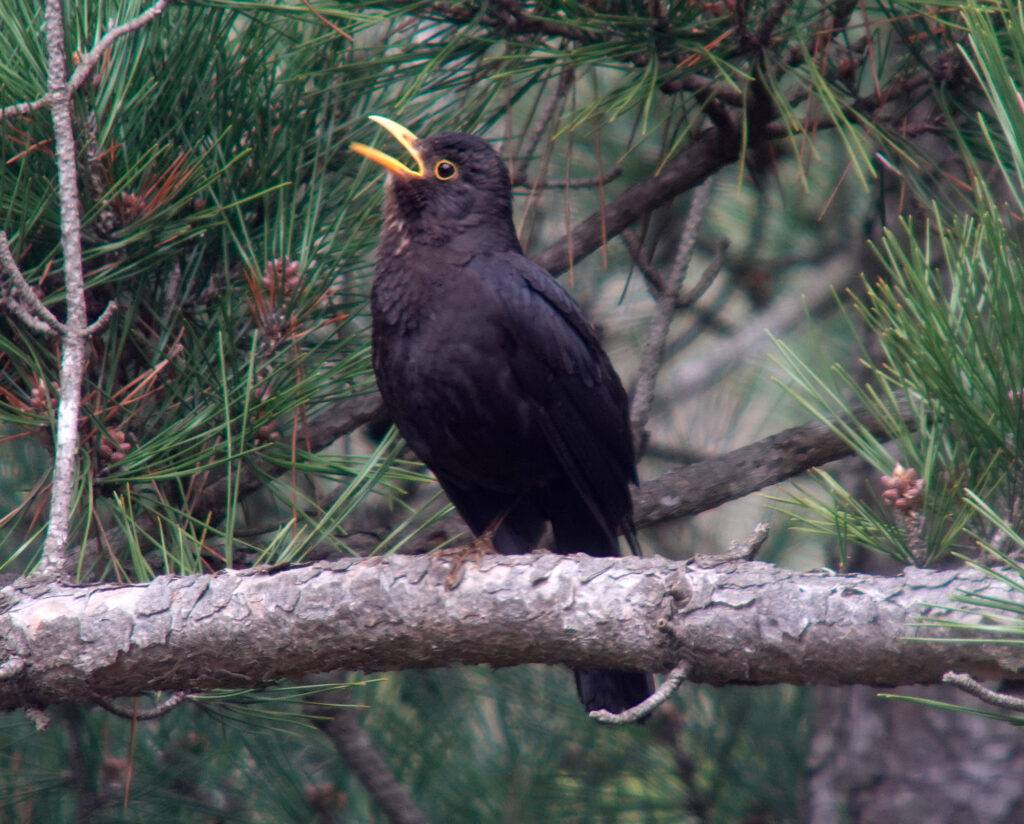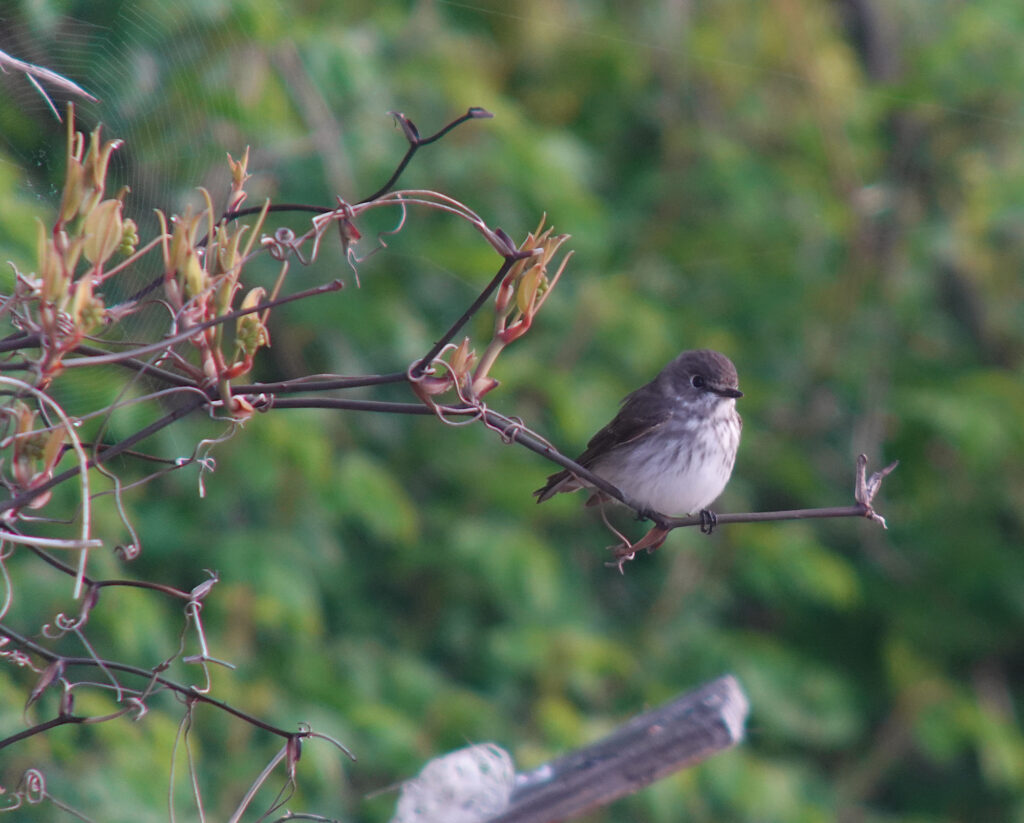Bird News by Nial Moores and Charlie Moores
A full week of dawn to dusk birding sandwiched between two half-days on Baengnyeong yielded a total of c. 174 species, with an obvious progression through the week from tardy winterers to mid-spring arrivals – especially in the west of the island, while in the northeast, decent numbers of Brambling, large numbers of Hawfinch and several Japanese Waxwing seemed incongruous with the unseasonably warm temperatures.


In addition to good views of pretty well all the expected late April migrants like Bluethroat, Eurasian Wryneck, Red-throated and Richard’s Pipits, and buntings (though many in unexpectedly low numbers – including Little Bunting and Yellow-browed Bunting, latter with a highest day count of only 130), highlights included the island’s first Japanese Night Heron and Japanese Robin; an island high count of 23 Little Whimbrel; and a presumed Green-backed Flycatcher. There were also several still unresolved ID challenges…

Checklists containing almost all of our observations have been posted on eBird.
On April 18th, the morning ferry crossing (kindly provided free to NM thanks to the generosity of Korea Express Ferry and the help of Incheon KFEM) was fairly uneventful, though included small groups of both Eurasian Curlew and Eurasian Whimbrel migrating low over the sea.
On arrival, the first surprise was an exceptionally early Black Drongo on wires above the road little more than 100m from the splendid Munhwa Motel. Although water levels in the Hwadong Wetland were high, species of note there included a booming Eurasian Bittern and a bohaii Black-tailed Godwit – a still rather poorly-documented taxon, which remained throughout (and was even joined for a couple of days by an early melanuroides). In the afternoon and evening, a total of 99 species were logged on the island.

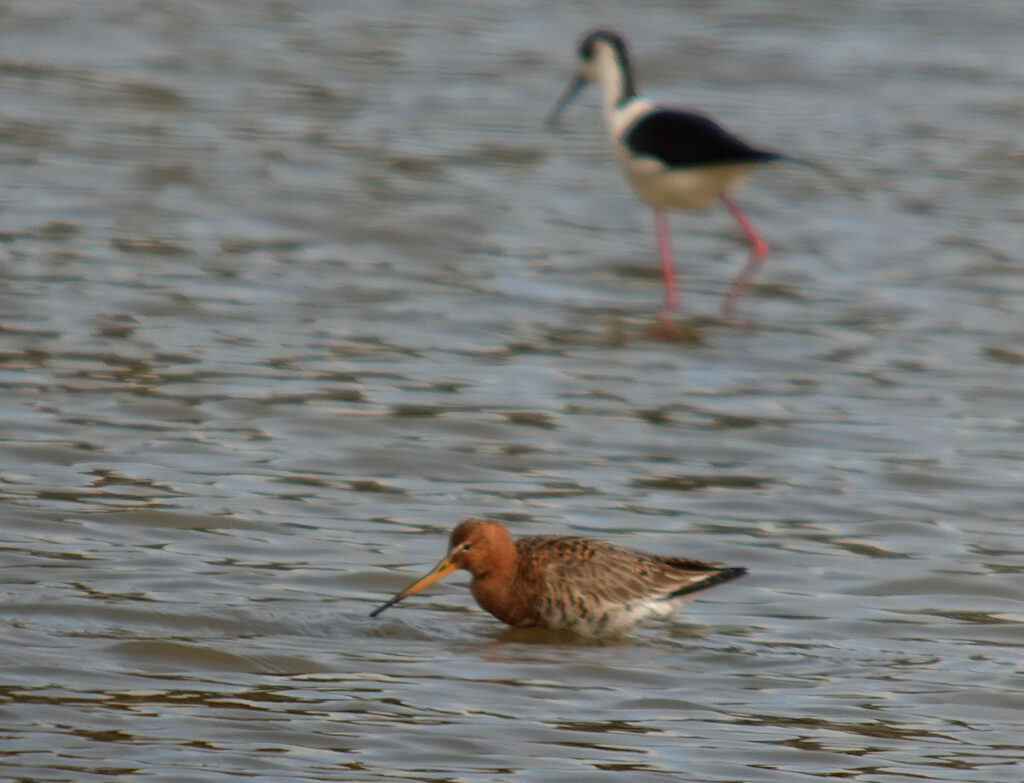
See full checklist here
On 19th, light southwesterly winds produced in the northwest first a singing Japanese Robin (which remained for most of the week) and a very wary Japanese Night Heron (seen on only two dates) – both island first records and bringing the island total to 394 or 395 species – followed soon after by a Grey-headed Lapwing and Latham’s Snipe (with ID of the latter based primarily on flight calls) in the northeast. In all we found 106 species.

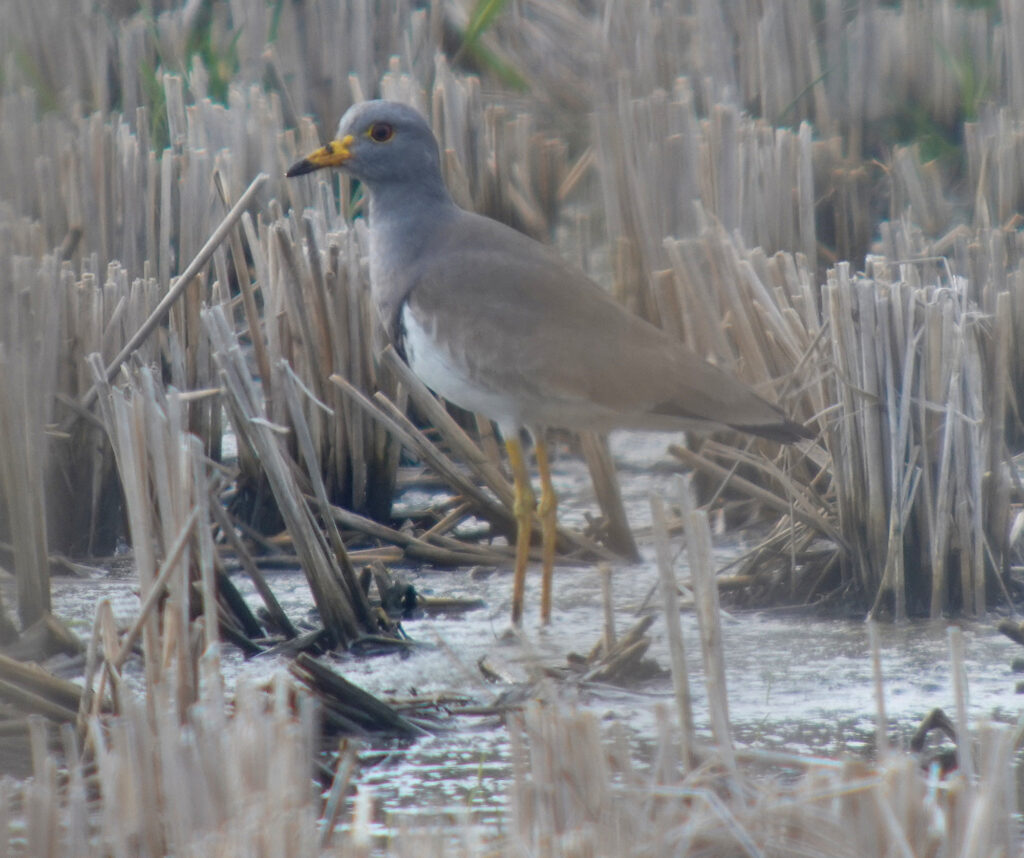
The full checklist is here.
On 20th, overcast conditions and light rain showers resulted in an increase in shorebird species, with the pick of these a very confiding Oriental Pratincole in the best fields in the NE. By far the most perplexing was an unseen and unknown singer, which repeated a very distinctive song 25-30 times over a 12+ minute period, before falling silent as rain started to fall.

Unknown singer. Please let us know if you recognise this song.

The full checklist is here.
On 21st, overcast conditions in the morning and light northeasterlies seemed to drop a few “smalls”, with e.g., decent concentrations of Pallas’s Leaf Warblers and Swinhoe’s White-eyes, and generated multiple highlights at the Hwadong Wetlands, including an island high count of five Eurasian Bittern (two booming, one of which remained invisible, and an additional three birds in slow flight over the reebed), and two close-hawking Oriental Pratincole, at times overflying two brilliantly coloured Citrine Wagtails. Initially more challenging was a dark-looking, very worn female redstart which on initial views apparently lacked any white in the wing. Prolonged views finally allowed us to see one small white spot on the right, and missing tertials on the left – Daurian Redstart, again!




The full checklist is here.
The 22nd was our most species-rich day, with at least 112 species logged. Highlights (all in the NW) included an adult Black Stork, which unfortunately was chased unrelentingly by a mob of Large-billed Crows; brief, but close views of the Japanese Night Heron (head and neck only!); very early Indian Cuckoo and Brown Shrike; and what was presumably a Second Calendar-year male Green-backed Flycatcher Ficedula elisae (second or third sight record for the island), seen only from directly below, and then in flight away from us. Frustratingly there was insufficient time to get any images. From below, the bird looked large-billed, and had clean, unmarked yellow underparts and white undertail coverts. Expecting the bird to be a Yellow-rumped, a quick view of the head as the bird looked down at us revealed a strong eye-ring and what looked like some paleing on the lores but no supercilium. As the bird flew into an adjacent tree and then away from us, the upperparts looked fairly plain, greenish, without any yellow rump band or obvious white in the wing (though perhaps the bird did have fainter wing bars). The lack of vermiculations/ squamations on the breast and lack of yellow rump band rule out Yellow-rumped; and the lack of orange in the throat/ breast and the brightness of the yellow on the underparts, together with the lack of yellow on the rump should also rule out Narcissus or Ryukyu of any age.


The day’s full checklist is here: https://ebird.org/checklist/S169771766
A quieter day on the 23rd (here and here ) ahead of a much anticipated weather system to the island’s south included a puzzling gull or two.


This was followed by another generally quiet day on 24th, apart from a remarkable hour or two in the afternoon in the central rice-fields. First up were three Amur Falcon feeding close to the road (with a fourth nearby); then a single Little Curlew (surely, Little Whimbrel is a much better name!) heard then seen high in flight, perhaps flushed by a passing Peregrine Falcon. Remarkably, 10 minutes later what was presumed to be the same Little Curlew then dropped back in from high to forage along a bund in between rice-fields. Moving closer to re-find and watch that bird, we found our first Sharp-tailed Sandpipers of the spring, and saw a group of 15 or so medium-sized shorebirds fly away from us (more Little Curlews?). Driving away slowly, we then accidentally flushed ten Little Curlew which had been feeding unseen close to us, right next to the road. These flew up and dropped down again only 300m away. Moving round for better views, we found two flocks: one of 10 (one of which was too close to the car to digiscope) and one of 13, giving a minimum count of 23. There is little doubt that these birds had just dropped in, presumably after being pushed up the Yellow Sea by strong southerlies 200km or so to the south of us.

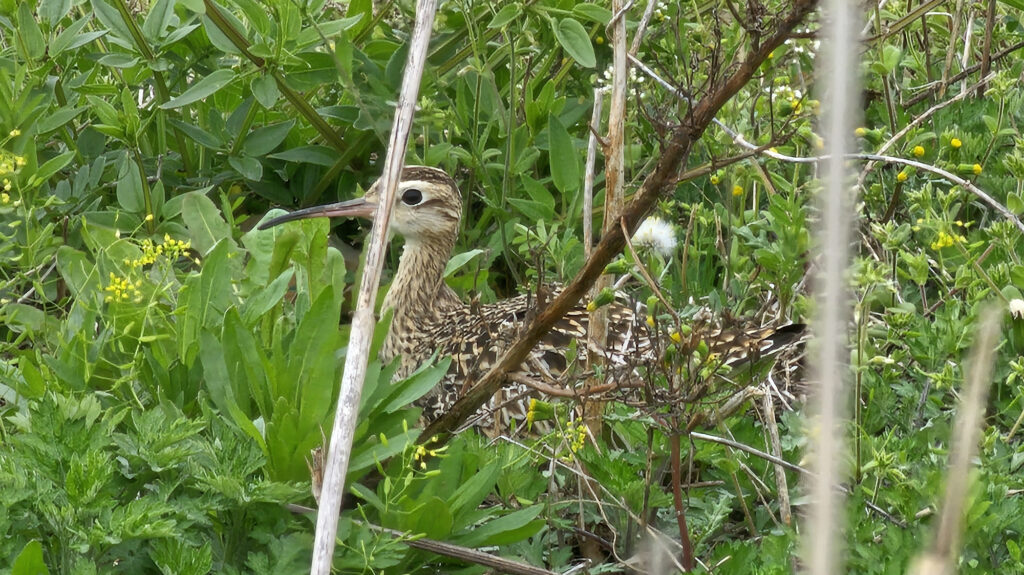
A search of the harrier fields failed to find any additional Little Curlew, but instead produced two high-flying Pacific Golden Plover and more remarkably a Purple Heron foraging in grass next to the road…

Full checklists here and here.
It was again fairly quiet during the morning of the 25th (with highlights provided by views of singing Siberian Rubythroat and Siberian Blue Robin: full checklist here) but the appearance of a white-headed raptor heading east during a convenience store stop led to us checking out a new Viz-Mig watch point in Jinchon (https://ebird.org/checklist/S170196197). In addition to great eye-level views of some species (including Japanese Sparrowhawk and Ashy Minivet) this stop also added a white-headed Upland Buzzard (presumably the same bird as earlier), Forest Wagtail and a White-throated Needletail to our trip list.

On 26th, our last morning on the island was spent in the northwest where to the backdrop of a singing Chinese Blackbird we found good numbers of several newly-arrived species, especially Chestnut-flanked White-eyes, Radde’s Warblers and our personal first Mugimaki and Grey-streaked Flycatchers of the spring.
For a full checklist see here.
